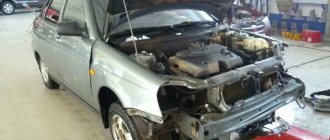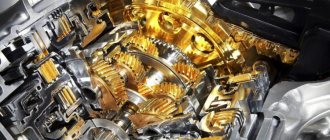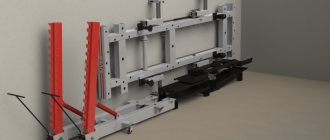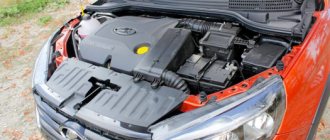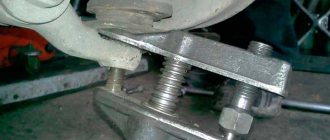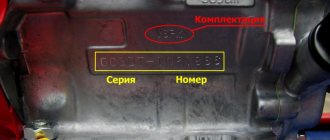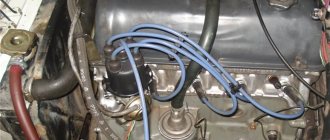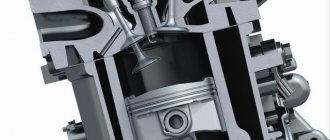To carry out the work, it is important not only to know what is included in an engine overhaul, but also how to prepare the engine and operate it after repair. It is first necessary to disassemble the internal combustion engine, clean it, assess the condition of the unit, and check all components. If the engine requires an overhaul, you should thoroughly prepare for the process, following the sequence of actions and recommendations of specialists.
What mileage should be before overhaul?
The resource for internal combustion engines in middle-class cars up to the “capital” range is approximately 200 thousand km. There are vehicles that manufacturers position as “million-dollar” vehicles, capable of covering up to 1 million km. However, modern engines practically do not have such parameters, especially in domestically manufactured cars.
The VAZ plant for model 2114 set an average mileage of 150 thousand km, which is comparable to the performance of most Russian cars. This parameter can be extended if all current problems are resolved in a timely manner. Popular foreign cars have a range of 200-300 thousand km before engine overhaul.
What is a major overhaul
Overhaul is a set of repair work related to the replacement of parts that cannot be repaired (mainly pistons, rings, gaskets) and the repair of parts that can be restored to factory condition. After the overhaul, the engine is restored to its power performance indicators (power, compression, noiselessness and smooth operation). Unlike routine or unscheduled repairs (for example, the washer fuse blows or the heated rear window 2107 does not work), a major repair involves repairing the entire engine, and not individual parts. Therefore, this type of work costs a lot, requires experience, time and, preferably, a warm, well-lit garage if the driver wants to make capital with his own hands.
Since the engine is the heart of the vehicle, its repair must be carried out in compliance with all rules and regulations, accuracy and skill.
When is repair needed?
Reasons why an internal combustion engine may be needed:
- Increased fuel and oil consumption. This occurs due to the appearance of excessive gaps, clogged piston rings, and decreased elasticity of oil scrapers.
- Decrease in vehicle power.
- The appearance of dark blue smoke from the exhaust pipe, which indicates mixing of oil with the fuel mixture.
- Constant light on oil pressure indicator.
- The engine knocks or makes other strange noises. This problem occurs due to wear of the crank mechanism.
- There is a decrease in compression. This indicates wear of the gaskets and piston rings.
- Formation of plaque and carbon deposits on spark plugs.
- Unreasonable overheating of the unit.
A little about contract engines
Recently, capital has acquired a worthy alternative in the form of contract engines. But not everyone knows what it is. To be honest, just a few years ago I didn’t really understand what was going on. But everything changes, new knowledge and good friends appear who can give advice.
If you look at the problem of engine wear from the perspective of money, then a contract engine costs about the same or can cost a little less than capital. But remember that a contract power unit means a used engine, that is, a used one. When contacting dubious organizations, you may be offered an engine whose condition, to put it mildly, is not very good. Plus, problems may arise with the legality of purchasing a contract engine. After all, it will have to be registered again later.
That is, I believe that choosing a contract engine rather than a major overhaul is relevant only in a few cases:
- the engine in your car can no longer be restored due to serious breakdowns and major damage to its integrity;
- it is required to change the power unit as quickly as possible, and major repairs take a very long time;
- It is difficult to find suitable parts to restore the motor.
And if you are suddenly offered a supposedly excellent contract engine, and at an attractive price, I strongly advise you to refuse. The same g16a Escudo from Suzuki cannot be cheap if it is in good condition.
I hope this material has given you food for thought, and also allowed you to take a full look at the problem of overhauling power plants in cars.
Be sure to share your impressions in the comments, ask questions and don’t forget to subscribe to the VK group.
What's involved in the process?
After disassembling the engine, the components are washed and cleaned. This will allow the specialist to find out the degree of wear of the parts, their maintainability or the need for replacement. Determining the clearances of mating elements and checking the cylinders for scuffs and scratches is carried out after removing the cylinder head.
During the troubleshooting process, the pistons are also inspected for chips, carbon deposits, connecting rods, and the engine crankshaft. Visually check the gas distribution unit, bearings, fingers, valves. Take measurements of the main parts, comparing them with factory parameters. After troubleshooting, the level of wear is assessed, sorting spare parts for repair, replacement, or abandonment.
Our verdict
What's the result? Replacing the engine is a simpler and cheaper, and sometimes the only technically possible way to solve the problem. But if the engine initially has a poor reputation, say, at a certain point scuffs appear on the cylinders or the crankshaft may break, then replacement in this case will only delay the occurrence of the problem.
And it’s okay if you are replacing an engine with a mileage of half a million kilometers for a much more recent one, which has “run” a hundred thousand. What if you exchange an awl for soap? A major overhaul will not save either time or money. In general, this is not a question about economic feasibility, but about further reliability and service life, since “capital” can breathe a second life into an old engine. But only on condition that the repairs are carried out at the proper level. No confidence in the performers? Then it’s better to immediately choose the replacement option!
Need spare parts? Look for them in our ad database!
Sequence of engine overhaul
If you have not had to do major repairs yourself, it is advisable to invite an experienced person or specialist who understands this process. The procedure should be carried out in a dry, lit garage; all small parts should be sorted without dumping them into one pile. When disassembling, remember (or write down) the sequence of actions. The process consists of several successive stages.
Dismantling and disassembly
The speed and complexity of dismantling is affected by the design of the internal combustion engine, the type and make of the car, and the type of gearbox. The placement of the motor on vehicles with rear-wheel drive and front-wheel drive is also different. Carburetor modifications are simpler and faster to disassemble, since their design does not include many electronic devices that must be carefully disconnected and removed to get to the unit.
It will take about 3 hours to disassemble a VAZ engine. Foreign analogues will take 8-10 hours. All nuts and bolts are placed neatly and the work is done slowly.
Defects of internal combustion engine elements
The procedure consists of the following steps:
- Inspect the crankshaft, check its dimensions, bends, and alignment.
- Examine the body part of the cylinder block.
- The condition of the pistons, connecting rods, and other elements of the connecting rod and crank assembly is examined for the presence of play and defects.
- Inspect the cylinder head housing and timing parts.
- Determine what can be repaired or replaced.
Washing the engine and individual parts
This procedure should not be neglected. Flushing the engine allows you to more accurately determine the degree of wear and find microcracks in the cylinder head. All parts should be processed separately with preliminary cleaning of carbon deposits.
Grinding the block and crankshaft
Having prepared the spare parts according to the list, they begin to repair and restore the engine block and crankshaft. Using milling and grinding equipment, the cylinder head seating layer is removed until all chips and macrocracks are eliminated. If there are deep flaws on the unit being processed, it means that the layers are removed in several passes. The thickness of the surface to be removed at one time is from 0.05 to 1 mm. At the last stage, the product is polished until a “mirror” appears.
Repair of cylinder head
If you perform this process yourself, follow these steps:
- They change the camshaft, if there are several of them, then that’s all.
- Install new intake and exhaust valves.
- Attach the prepared guide bushings.
- Oil scraper caps and seats are replaced.
If cracks are noticed in the cylinder head, the head is replaced and ground again, or argon is used to weld the defects.
ICE assembly
List of steps to assemble the engine:
- Mount the separated liners and place the crankshaft in place.
- Install the elements of the connecting rod and piston group.
- The yokes are placed and secured.
- The gaskets are fixed so that they do not overlap the channel sockets.
- Install the covers covering the internal combustion engine.
- Install a pump pump for oil.
- Attach the crankshaft pulley.
- Mount the cylinder head, crankcase, and pan.
- Collect small components.
"Disposable" times
Let's start with the fact that the very concept of a major overhaul among car enthusiasts has a very vague framework. Restoring compression by replacing piston rings is not a capital investment at all, even if along the way the car owner went broke on new connecting rod bearings. Nevertheless, engine overhaul should be understood as a whole range of works aimed at restoring the original parameters (including compression, oil pressure, etc.), affecting a complete revision and restoration of all components of the internal combustion engine, starting with the connecting rod and piston group and ending with the head cylinder block.
But, we repeat, it is generally accepted that the days of such repairs are behind us. They say that engines are now “disposable”: aluminum blocks come without liners, with the cylinder walls coated - what is there to bore? In fact, as practice shows, such motors are made: the blocks are bored, lined, even repair parts from famous manufacturers are found - and the cars drive! The problem is different: often in the event of the “death” of an engine, car owners prefer replacing the engine with a used one rather than repairing it. Simply because it is easier and cheaper.
“At first I thought about restoring my engine. But when I started counting, I realized that this was impractical: there were only $250 worth of parts for the cylinder head, and the total budget was $650. A used motor cost $550 - I was lucky to find one with good injectors. The car started up as if it had been turned off yesterday! And the engine itself was in very good condition, the belt was like new, but the sellers cut it off. Rollers, seals - everything seems to have been changed yesterday!” — says the owner of an Opel Vivaro, who ultimately chose to buy a used 1.9 dCi engine.
And this is a typical approach, especially if economic feasibility is at the forefront. A major overhaul requires approximately 6-8 times more labor than simply dismantling/installing an engine with replacing consumables and filling in all technical fluids. And in most cases (if we are talking about mass-produced models aged 10 years or more), a “capital” will cost 1.5-2 times more than a turnkey replacement. Indeed, in addition to a decent amount of work, including specific ones, you will need a whole set of high-quality parts and corresponding costs.
How to check the operation of the motor after a major overhaul?
After assembling the internal combustion engine, it is run-in, which occupies an important place in the grinding in of new parts and the entire unit. It is not recommended to put a large load on the engine; sudden starts and jerks should be avoided until the mileage exceeds 2 thousand km.
Break-in is carried out as after purchasing a new car, which means that the following rules are adhered to:
- warm up the engine before driving;
- smooth acceleration alternates with gradual braking;
- you need to drive at low speeds;
- Do not brake with the engine;
- It is not recommended to move at the same speed for a long time;
- Towing heavy loads is contraindicated.
What is the meaning of “capital”?
At one time, we did a major overhaul of our Sierra from a “repossessed car.” Boring and grinding the block cost 150 rubles, work with the cylinder head - 200. We did everything else ourselves, so we count the spare parts. New parts and consumables for the engine (sets of gaskets and seals, liners, piston rings, pump, thermostat, timing drive, V-belt for attachments) cost 320 rubles. Let's not forget about technical fluids and filters - a total of 76 rubles. In total, about 746 rubles were spent on the engine, not counting additional modernization and the transition from a carburetor to a digitally controlled injector. Is it necessary to say that when dismantled, a gasoline “live” engine in a Sierra will cost 2-3 times less? What then is the point of a major overhaul?
“The contract engine cost 4,500 euros, just a used one removed from the car cost $2,000, but it could have been anything. Therefore, I opted for a major overhaul, which cost about $4,000. Yes, a lot. But now I can be sure that in the next few years and at least 100-150 thousand kilometers there will be no serious problems,” explains the owner of a Mercedes R350, whose engine (“the same” 3.5 V6 M272) received scuffing of the cylinder walls after oil fasting.
In this case, the person considered it reasonable to spend time and money on major repairs. After all, a well-known problem with the 3.5 V6 (M272) and 5.5 V8 (M273) engines is the occurrence of scuffing on the cylinder walls after 150-250 thousand km, which first leads to knocking and then to “oil burn”. That is, replacing a knocking engine with a used one does not fundamentally solve the issue: over time, you can encounter seizures on the “new old” engine. At the same time, most likely, you will need to replace the timing chain and its tensioners, as well as a worn balance shaft or its gear (depending on the engine). It may be necessary to change the clutches of the variable valve timing system. Therefore, in this case, a comprehensive repair is a good solution if you want to radically resolve the issue and not return to it in the future.
There is also such an aspect. Even if you don’t take into account the actual cost of a used motor, replacing it comes with costs. Let’s say the work of dismantling/installing and connecting all systems costs 400 rubles. You will pay about the same amount for all new “consumables”, seals, gaskets and technical fluids. Now imagine that the “new old” engine turned out to be unsuccessful - and you again “find yourself” with the costs of removing it and installing the next engine, which is already “successful”. The risk of such a scenario can be reduced by purchasing from a trustworthy large company specializing in the sale of used motors, where you can count on preliminary diagnostics and warranty obligations. But even in this case, you are not immune from the fact that, if not now, then in a year or two, characteristic hardware problems will not appear, simply because this engine has reached the mileage at which these very “sores” arise.
It is for this reason that experienced motorists claim that “for themselves,” with an eye to long-term operation, they would prefer to “overhaul” the engine. Yes, it will be more expensive, but after troubleshooting, repairing, and replacing the parts that require it, you get a practically new engine that will not present any surprises in the next few years. Of course, under two conditions: after the repair, a run-in will be carried out, and most importantly, the overhaul itself will be performed at a high level.
And here lies the problem! The final result depends on the quality of the work performed and the level of parts, materials, and equipment used. Let’s add to this that even experienced motorists, as a rule, do not perform all the work themselves: they entrust the same block boring and head grinding to specialized specialists. As a result, we get several performers, a large amount of work and a lot of factors that influence the final quality of the entire repair. And here the level of risk is exactly the same: you can spend a lot of money paying for repairs, and at the end you will end up with a motor failure - and the need to solve the problem again, wasting time, nerves and money again.
Break-in features
There are several ways to break in an internal combustion engine after a major overhaul:
- Cold version on the stand.
- In our country, cold running without a stand is common. It consists of moving a car with the engine not running in tow for 2 hours, at a speed of about 3 km/h. Refrigerant and engine oil are pre-filled.
- Hot running. The internal combustion engine is started, after 3 minutes of operation it is turned off. The process is repeated several times, waiting for the unit to cool down after each start. At the same time, leaks and other important parameters are checked.
Dismantling and disassembly
Depending on the make and model of the car (engine design, number of cylinders, type of gearbox), the engine removal process may vary. The engine location on front-wheel drive and rear-wheel drive is also different.
Carburetor engines are much easier and faster to disassemble, since they are not stuffed with electronic devices, in the presence of which, in order to get to the engine itself, you have to carefully dismantle them all.
So, if you have to capitalize Kamaz, for example, then its diesel engine from the Yaroslavl YaMZ-236 plant will take about 10 hours to dismantle. If you do the same work with heavy-duty Kamaz analogues, it will take more than 30 hours.
And to disassemble a VAZ engine, it takes about 3 hours. And the engines of foreign passenger cars will take about 10 hours.
It is necessary to disassemble slowly, throwing bolts and nuts anywhere. With disassembly, diagnostics, so to speak, have already begun.
Tips and tricks for proper engine operation
You will have to partially overhaul the engine yourself. For boring and grinding the cylinder head you need professional machines, the rest of the work can be done with your own hands. To increase engine life, all consumables must be changed in a timely manner, oil - every 8-10 thousand km. (after major repairs - after 500, 1000, 1500, 2000 km, then according to schedule). It is necessary to undergo maintenance according to deadlines and purchase high-quality spare parts. Extending the working life of the internal combustion engine is facilitated by a smooth, careful ride without jerks or sudden starts.
Assembly and installation of internal combustion engines
Sequence of engine assembly after major overhaul:
- Install the half-shaft bearings and seat the crankshaft.
- Install connecting rods and piston group parts.
- Correctly install and tighten the yokes (arc-shaped crankshaft mounting).
- Install the gaskets correctly, check that the gasket does not cover the channel holes.
- Installation of covers covering the motor.
- Install the oil pump and water pump.
- Install the engine crankshaft pulley. We have already learned how to remove the crankshaft pulley.
- Install the cylinder head.
- Install the pan, crankcase.
- Collect small knots.
If you decide to make a capital with your own hands for the first time, after all the work before assembly, it is better to carry out the assembly with an experienced specialist in this matter. The lifespan of the entire car depends on the quality of the assembly.
Minor damage
Failure to promptly eliminate defects and malfunctions can also accelerate engine wear. Incorrect adjustment of valves and other elements of the power unit can also lead to overhaul of the internal combustion engine. A knocking camshaft, for example, is a major source of contamination in the lubrication system.
Engine pistons and combustion chamber surfaces are destroyed under the influence of the following factors:
- Incorrect ignition timing setting.
- Inaccurate operation of the fuel injection system.
- Faulty engine control system.
- Spark plugs that are not suitable for a specific car model.
The factors listed above can lead to the engine stalling while driving and not starting, detonation in the ignition system, or failure of the combustion chambers and pistons. Engine overheating caused by a breakdown of the cooling system can cause deformation of the cylinder heads.
The oil film that forms on the engine parts exposed to friction loses its strength if there is insufficient cooling, which leads to rapid wear of the parts and the appearance of piston burnouts and other malfunctions in the fuel equipment.
High mileage is the main reason
For engines with very high mileage, a major engine overhaul may be required (suddenly), because... mechanical elements and internal seals wear out. It is difficult to determine how long it will take for your engine to require capital.
It all depends on how the car was maintained and operated. However, it can be assumed that a properly maintained drive unit will require repairs only after 350-400 thousand km. mileage
Of course, engine overhaul may be required much earlier, with much lower mileage. The reason will, naturally, be poor engine maintenance. Let's look at what could be the main reasons for engine failure ahead of schedule.
Conclusion:
Engine overhauls are very expensive. It is not surprising that in many cases it is easier to buy a used motor from a disassembly unit. However, it is always roulette. No one knows if the “new” engine will need major repairs in a few months.
Well, the best solution is to buy a well-proven reliable car and use it correctly, according to all the rules, without skimping on oils, filters, spark plugs, coolants, without suffering, in order to avoid a situation where engine overhaul exceeds the cost of the car, and a good 10 It becomes easier to scrap a summer car than to repair it.
Turbocharged engines
Modern small turbocharged power units, built according to downsizing principles, may require major overhauls much sooner than naturally aspirated units.
For such engines, long mileage is already about 200 thousand. kilometers. Lack of power reserve, “chips” of drives, high susceptibility to overheating, carbon formation and detonation. You will have to pay for all this sooner or later.
Engine care, driver actions to extend the “life” of the engine
To extend the life of the engine, it is necessary to create the most gentle operating conditions for it, try to maintain optimal engine speeds and use only technical fluids recommended by the manufacturer, in particular, high-quality oil and fuel.
Timely oil change: the most important procedure
In addition, regularly carry out various preventive measures and do not forget to take good care of your car.
